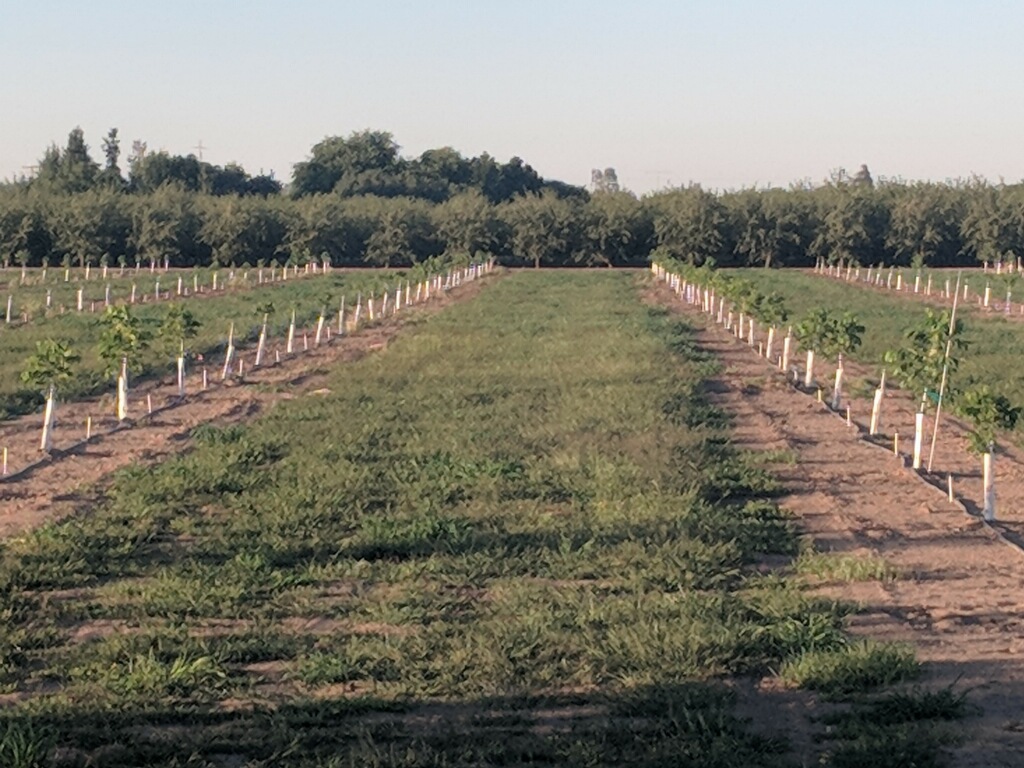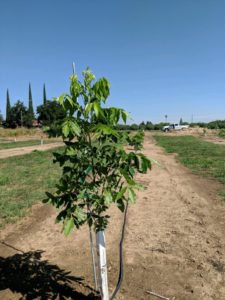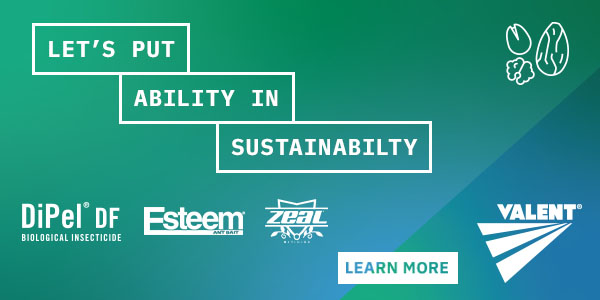
There was a time when the recommendation for nitrogen in an ‘on’ year for pistachio trees was to apply 220 to 250 pounds and “everything would be ok,” said Ultra Gro PCA and CCA Robert Smith.
Smith said research by UC Davis researcher Muhammad Ismail Siddiqui provided the Pistachio Prediction Model that uses nutrient analysis of spring leaf samples to predict late summer nutrient concentrations of nitrogen. Sampling and analysis early in the season offer management advantages and allows for fertilizer adjustments for the current crop load.
Nitrogen, Smith explained, is a structural component of several essential plant parts and compounds. Those include chlorophyll, nucleic acids and all proteins. As a result of their functions, corrections of N shortages will result in gains in vegetative growth, higher protein levels and a higher percentage of split nuts.
The four “Rs” in nutrient stewardship are right fertilizer, right rates, right time and right place. Rate and time should be the focus this year, Smith said. The goal is to apply adequate, and not excessive N, with the goal of matching the N rate to the nut load and tree needs.
Growers should already have their nitrogen management plan done as a starting point. The next step is to evaluate bloom and nut set to make a realistic estimate of crop potential on the tree. Using a nitrogen management approach, a preseason plan can be made based on predicted yields, nitrogen contributions from water and other sources. May tissue sampling and early season yield estimation can be used to optimize the annual nitrogen fertilization plan by adjusting the May through July and/or fruit maturity/postharvest fertilization rates accordingly.

So, how much N should be used? Smith said a 5,000-pound crop would require 140 pounds (5 x 28 lbs. N/1000 lbs. CPC weight) plus 25 to 40 pounds for the tree. That equals 165 to 180 pounds, assuming 100-percent efficiency. Well-maintained low-volume irrigation systems operate at about 75 percent efficiency, Smith noted, so the actual amount for 25 percent more would be 206 to 225 pounds to meet the requirement for a 5,000-pound crop.
Smith’s recommendation is to begin applications mid- to late-April during early nut development. April application would be 20 pounds, May application would be 50 pounds and 75 pounds in July. These amounts assume 75 percent efficiency and no N in irrigation water. An additional 20 percent of annual fertilization can be provided after hull split through early post harvest, but the decision should be based on current-year yields, prior N fertilization rates and July leaf N values.

Cecilia Parsons
Cecilia Parsons has spent the past 30 years covering agriculture in California for a variety of newspapers, magazines and organizations. During that time she has been fortunate to witness some of the important events that have shaped this diverse industry and worked hard to examine and explain these events for readers.
When Cecilia first moved to the San Joaquin Valley in 1976, her first journalism job was at a small daily newspaper where she covered “farm news.” From there she branched out to writing for a dairy magazine and a regional weekly agriculture publication.
Cecilia is part of a farming family from the rural community of Ducor where she also raises purebred sheep and is attempting to master versatility ranch horse riding.











